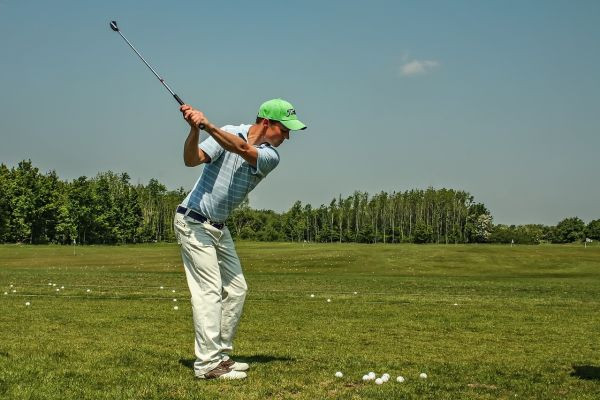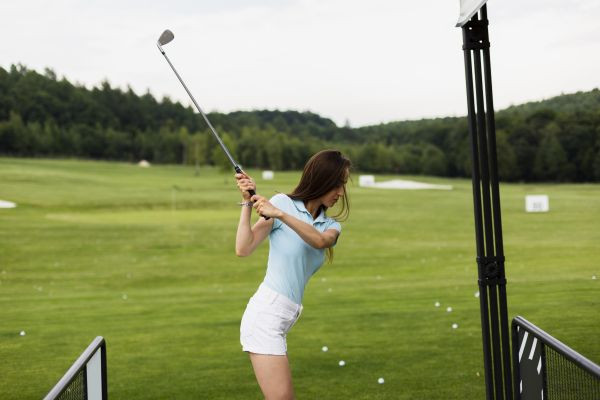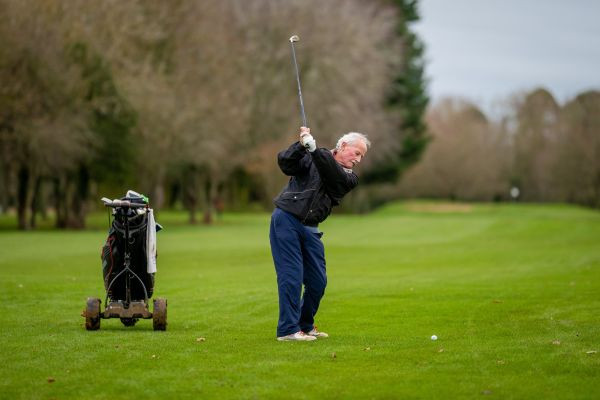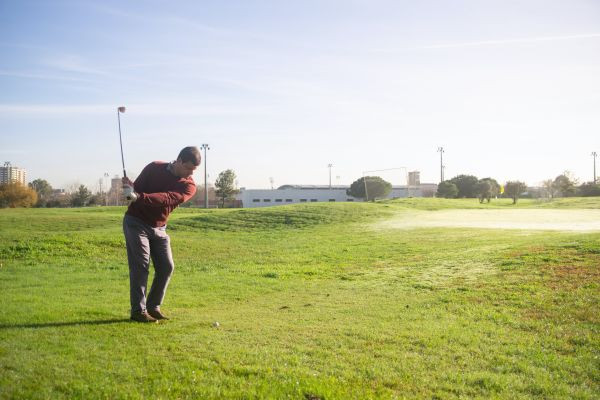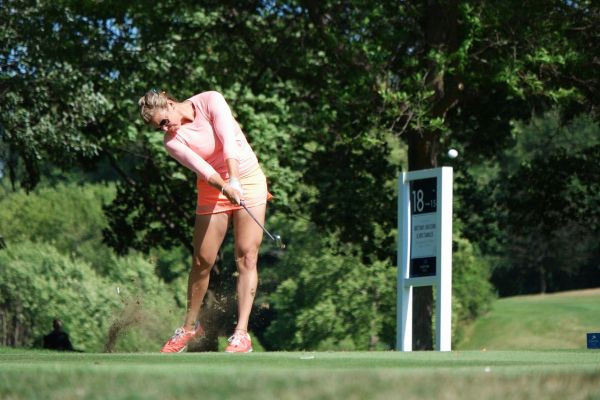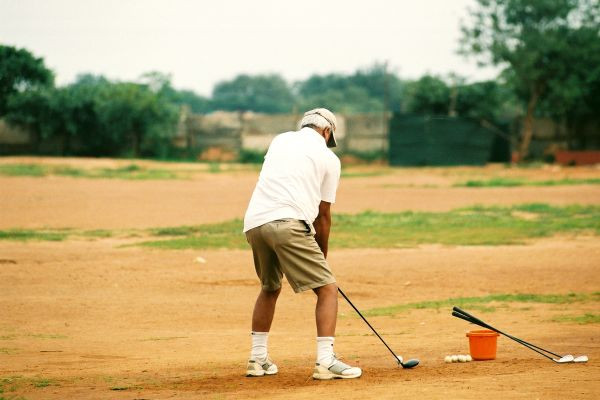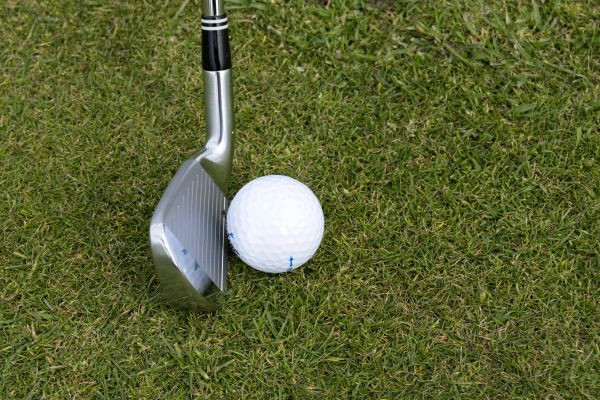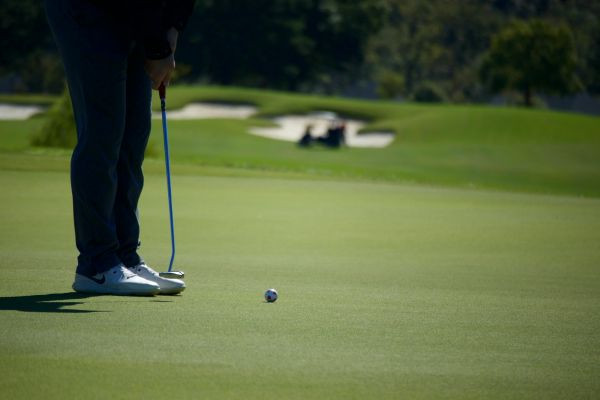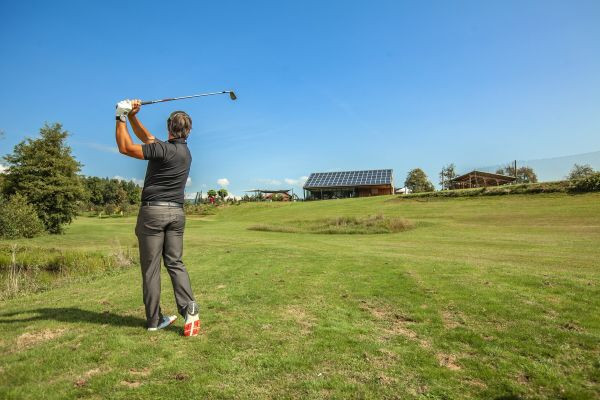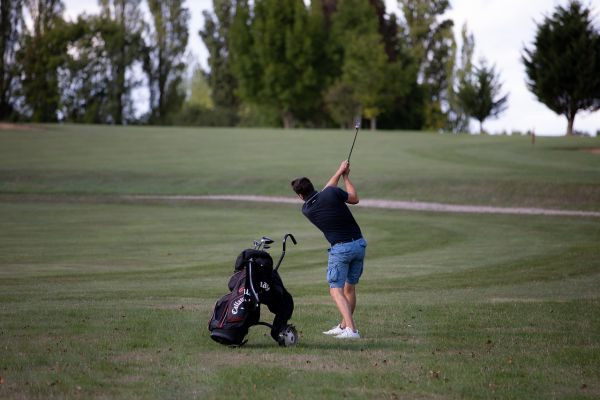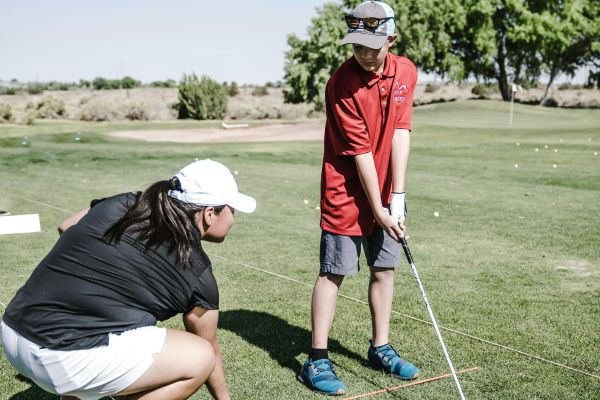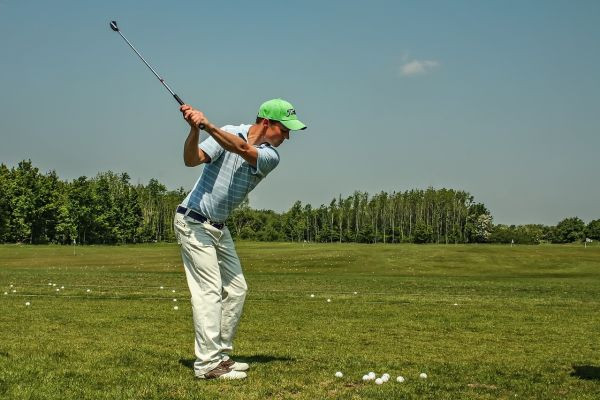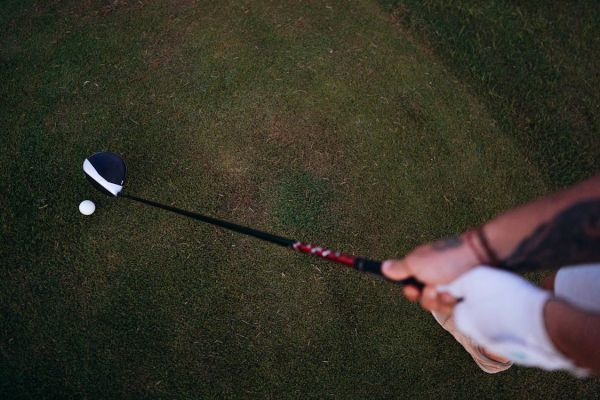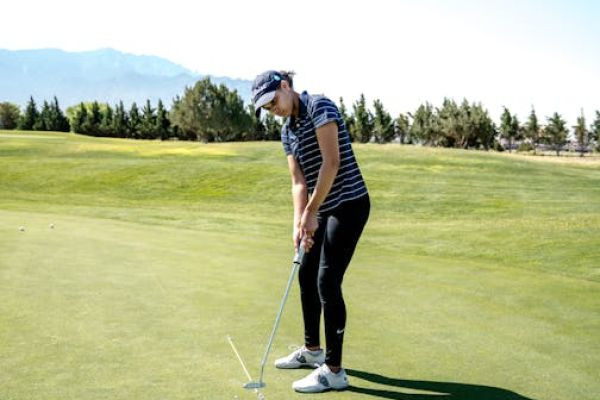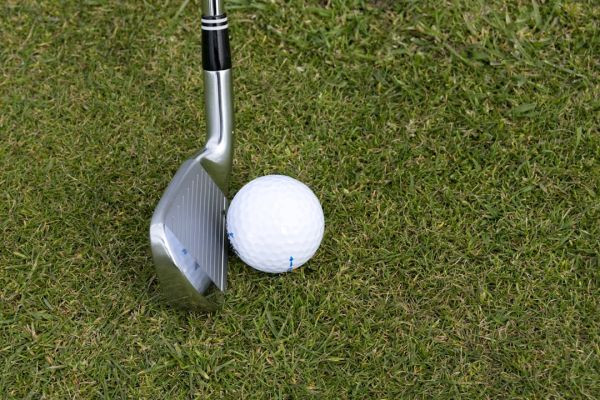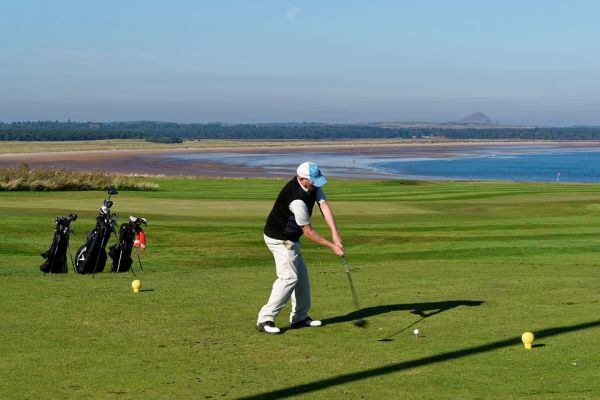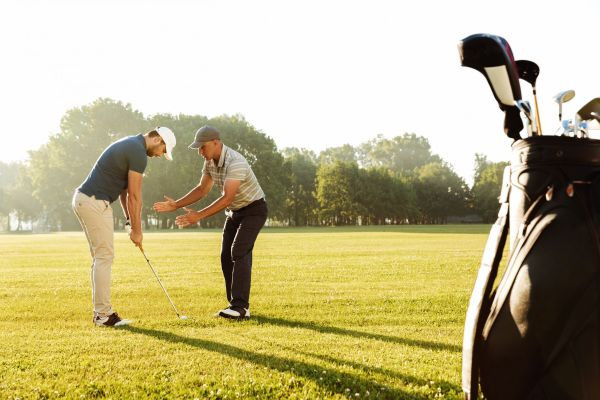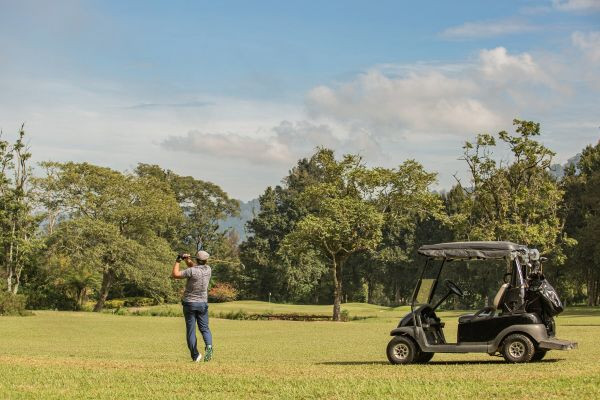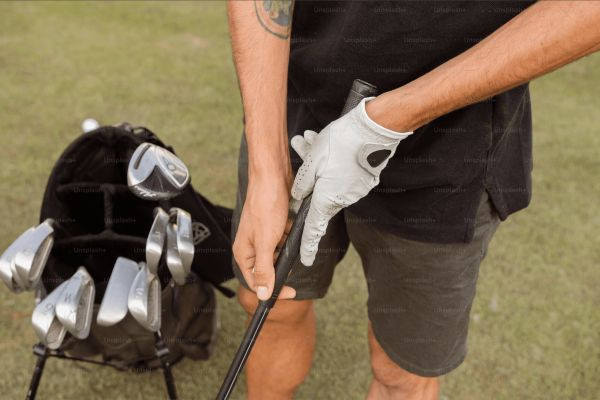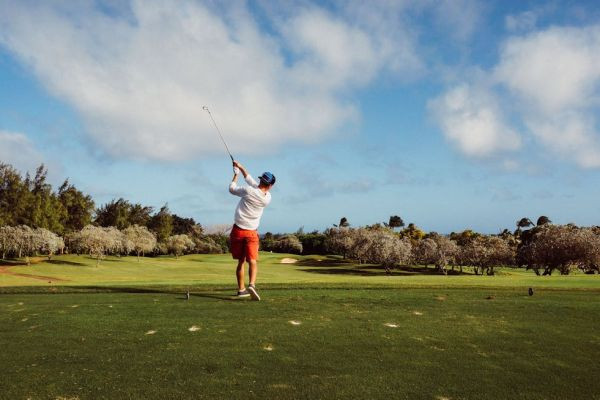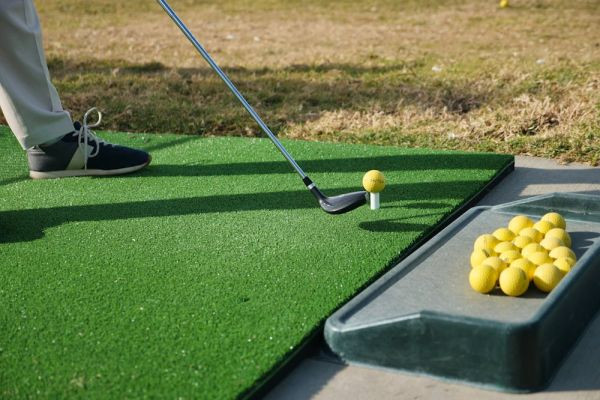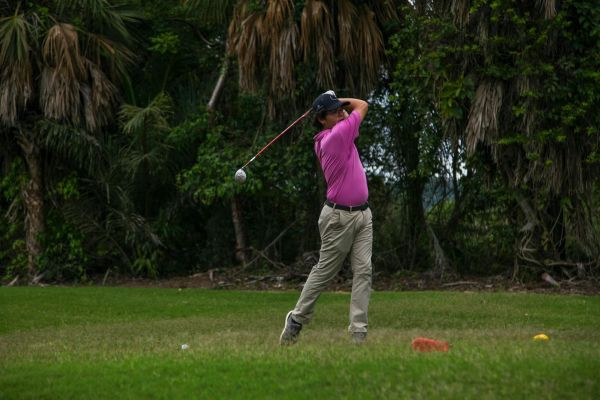Techniques for Hitting a Golf Ball Below Your Feet
Golf is a game of precision, strategy and adapting to the terrain. Unlike the flat and predictable surfaces of a driving range, the actual golf course brings with it a variety of challenges, one of wh..

Golf is a game of precision, strategy and adapting to the terrain. Unlike the flat and predictable surfaces of a driving range, the actual golf course brings with it a variety of challenges, one of which is hitting a ball that's below your feet. This situation, common on hilly courses, requires special adjustments to your stance, swing and club selection. In this comprehensive guide, we'll explore the techniques that will help you master this tricky shot.
Understanding the Challenge
Confronting a ball positioned lower than your feet is akin to solving a complex puzzle; it requires a keen understanding of the variables at play and a thoughtful approach to address them. The slope of the terrain introduces a multifaceted challenge, influencing not just your balance but also the trajectory of your swing and consequently, the flight of the ball.
The incline can subtly shift your center of gravity, making a stable stance more elusive and turning the act of striking the ball into a balancing act. Moreover, the altered angle of your swing plane due to the slope can significantly affect the direction and distance of your shot, often leading to unexpected fades or slices that can veer off your intended path.
To navigate these challenges, a golfer must recalibrate their approach, considering factors such as the degree of the slope, the lie of the ball and the conditions of the course. This recalibration involves a series of strategic adjustments, from the way you position your feet to the manner in which you execute your swing.
Each adjustment serves a specific purpose: to restore balance, ensure clean contact with the ball and counteract the natural tendencies induced by the slope. By understanding these intricacies and adopting a methodical approach to your shot selection and execution, you can mitigate the challenges posed by the terrain. Let's break down these challenges and how to address them.
The Basics of the Downhill Lie Shot
Stance and Balance
Mastering the lie shot starts with getting your stance right, which is crucial, for the success of your shot. Having an adjusted stance not only keeps you steady but also paves the way for a smooth swing. When dealing with a ball positioned below your feet the natural tendency may be to lean into the slope to reach it.
However this instinctive action can throw off your balance causing you to lean forward and increasing the chances of a mishit. To counteract this, widening your stance intentionally can make a difference. This small adjustment helps broaden your support base evenly distributing your weight across both feet.
By shifting your weight towards your heels you stabilize yourself against the slope counteracting the forward pull from the hill. This tweak in stance is an impactful method to maintain stability throughout your swing ensuring that you stand firm and ready to deliver a powerful shot.
Adjusting Your Stance for Stability
The key to maintaining a stance lies in being adaptable to the terrain beneath you.
When the ground slopes downwards your body naturally tends to lean that way affecting how you swing.
Think of widening your stance like building a foundation, on terrain—it's all about staying steady against outside pressures. This wider base helps lower your center of gravity which is key for balance. Having a lower center of gravity minimizes unexpected movements during your swing and thus making it easier to move smoothly from backswing to follow through.
Beyond stability adjusting your stance also gives you a shot at hitting the ball and reduces the risk of mishitting due to balance issues.
The Importance of Knee Flexibility
Flexibility in your knees is crucial when dealing with a slope. The slope calls for a lower posture, meaning more knee bending compared to a flat lie.
When you bend your knees more during your golf swing it not only helps you get closer to the ball but also acts like a shock absorber, giving you the flexibility to adjust mid swing if needed. Imagine your knees as the suspension in a car – they let you adapt to the ground while staying in control.
By keeping your knees bent throughout the swing you can maintain the height. Avoid the common error of standing up straight during the swing, which can lead to thin shots or misses.
Club Selection: Using One More Club
Choosing the right club is crucial when dealing with a lie because it affects how far your ball will travel. The changes in your swing and slower swing speed on this terrain often result in shots.
To make up for this loss of distance it's smart to go with a club that's one level lower than what you'd use for that distance. This adjustment helps compensate for the power reduction caused by swinging on a downhill slope. This method enables you to swing and with better control without having to compensate for the loss of distance by using extra strength.
It's an adjustment that shows a comprehension of how the slope and stance affect the outcome of your shots ensuring that you can still hit your target despite the challenges presented by the terrain.
Advanced Techniques
Aiming Strategies
When the ball is positioned below your feet on a slope physics dictates that your shot is likely to curve to the right (for golfers). This tendency towards a slice occurs because of changes in your swing path and the impact of gravity on your stance. To address this, making an adjustment in aiming becomes crucial.
By aligning your aim to the left of your target you can counteract the expected rightward movement of the ball effectively. However this approach is not universally applicable. Requires judgment. Factors such as slope severity, wind conditions and distance, to the target all influence how leftward you should aim.
Mastering this skill necessitates not only understanding its mechanics but also dedicated practice. When playing golf on different types of terrain and in varied conditions, trying different aiming techniques can help you improve your ability to predict the balls trajectory accurately. This can transform a challenge into an advantage on the golf course.
Swing Adjustments for Downhill Lies
Making adjustments to your swing when dealing with downhill lies is essential for maintaining accuracy and control. Using a swing plane is often the key to success in situations. If swinging, visualize your swing as more vertical, similar to a chop motion.
The vertical swing ensures that your clubhead makes contact with the ball at an angle reducing the chances of it getting caught in the grass or affected by the slope. The steeper swing path allows for a hit on the ball resulting in cleaner strikes.
While this technique may feel unfamiliar initially and requires practice over time it can become a skill in your repertoire. Mastering this adjustment will give you confidence and precision when dealing with downhill lies, on the golf course.
Managing Swing Speed and Distance
When dealing with a downhill lie it's important to adjust your swing speed. By relying on power to overcome the challenge a smoother and controlled swing is more effective. The goal is to prioritize contact with the ball over distance.
A softer swing helps you stay balanced, during the shot and leads to a follow through.. To offset the potential loss in distance that comes from a smoother swing, selecting a longer club than you might normally use for a given distance can be effective.
Common Mistakes to Avoid
One of the basic problems in handling downhill lies in golf is failing to adjust one's stance. Golfers are tempted to take up their usual stance because they are unsure or simply lack the habit of ascertaining which leg should lead in that particular lie. The slope, however, adversely affects your balance and swing. If a golfer holds on to their standard stance, they will have to compromise on the effectiveness of their swing making them more likely to miss the target, topspin or choke the ball.
Another common mistake to make when you are on a Downhill Lie is to stick to your regular club choice. Golfers tend to hold on to their choice of the club at a given distance believing that the same club would do the job. However, gravity pulls down the slope, thus altering the flight of the ball and the total yardage covered. A golfer is more likely to land short or push the ball away from the target.
One must always keep these points in mind whenever they are playing on a slope below the ground level. Implementing these strategies will drastically improve your game and help you achieve better results.
Conclusion
In conclusion, Hitting a golf ball from below your feet does not have to be a daunting task. With the proper stance, club selection and swing adjustments, you can instead turn it to your favor. Remember to practice this technique in order to be proficient at it.
Frequently asked Questions (FAQs)
What's the main reason for using a wider stance on downhill lies?
Adopting a wider stance on downhill lies is necessary to maintain your balance and stability. Both are incredibly vital in ensuring that you stay in control while driving. The slope might make you lean downhill, which could mess up your drive. A wider stance lowers your center of gravity and counteracts that inclination. It provides much better control and allows for a powerful shot.
Why should I bend my knees more when hitting from below my feet?
Bending your knees more when you hit from below your feet adjusts your body closer to the level of the ball. This allows you to maintain a solid posture while you drive. Bending your knees more makes you much more adaptable to the slope and you can hence get a great finish. It prevents the most common mistake of 'straightening up' when you hit below your feet, which results in mis-hits.
How does club selection change for downhill lie shots?
When you are on a downhill lie, it's advisable to choose a club one number higher than what you would typically use. This is because on a downhill lie, expect the drive to be short. The slope alters the loft of your iron at impact. Thus, choosing a club with a higher number ensures you achieve the necessary distance. You eventually get a more natural swing with the least possible faults
Why should I aim left when hitting a ball below my feet?
You are supposed to aim slightly left of your target, as the slope causes the ball to tend towards the right. This plays a spoil sport situation for right-handed golfers. The correction is necessary to eliminate the ball's curvature and ensure that the shot flies straight towards your target. It is an aiming adjustment made considering the effect of the slope. This technique, once mastered, improves accuracy for challenging lies.
What are the key swing adjustments for a downhill lie?
The key swing adjustments include making a steeper swing and controlling power to prevent the ball from veering off in another direction. A steeper swing results in better ball contact, as the club will strike the ball at an angle that matches the slope. To avoid losing balance and tilt the shot towards the higher side, it is essential for a player to make a smooth, controlled swing without using a lot of energy.









